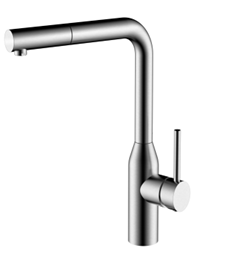Faucets are an essential component of any kitchen or bathroom, and they come in various materials. It can be challenging to decide which material is best for your needs, especially when each has its own set of advantages and disadvantages. In this blog article, we will discuss the pros and cons of different faucet materials to help you make an informed decision.
- Stainless Steel Faucets Stainless steel is a popular material for faucets due to its durability, easy maintenance, and sleek appearance. It is resistant to corrosion, rust, and tarnishing, making it an excellent choice for kitchens and bathrooms with hard water. Additionally, stainless steel is easy to clean, and fingerprints and smudges are not visible, making it a great choice for those who want a low-maintenance faucet.
However, one disadvantage of stainless steel faucets is that they can be prone to scratches, which may show up more on polished finishes. They also tend to be more expensive than other materials.
- Brass Faucets Brass faucets are durable, corrosion-resistant, and have an attractive appearance that can add elegance to any kitchen or bathroom. They are available in a variety of finishes, including brushed, polished, and antique, which can match any decor.
One drawback of brass faucets is that they can tarnish and develop spots if not properly maintained. Additionally, they tend to be more expensive than other materials, but their durability can make them a cost-effective option in the long run.
- Zinc Faucets Zinc is a low-cost material that is often used in faucets. It is lightweight, easy to manufacture, and can be finished in a variety of colors and finishes. Zinc faucets are also corrosion-resistant and do not rust, making them a good choice for bathrooms and kitchens with hard water.
However, the downside of zinc faucets is that they are less durable than other materials and can easily scratch or break. They may also not last as long as other materials, which means they may need to be replaced more frequently.
- Plastic Faucets Plastic faucets are a budget-friendly option that can come in a variety of colors and finishes. They are easy to install, lightweight, and resistant to corrosion, making them a good choice for bathrooms and kitchens with hard water. Additionally, they are available in various styles and designs, making it easy to find a plastic faucet that matches your decor.
However, plastic faucets are not as durable as other materials and can easily break or crack over time. They may also not last as long as other materials, which means they may need to be replaced more frequently.
In conclusion, when choosing a faucet material, it is essential to consider factors such as durability, maintenance, and cost. Each material has its own set of advantages and disadvantages, and it is up to you to determine which one best fits your needs and budget. By understanding the pros and cons of different faucet materials, you can make an informed decision and choose a faucet that will serve you for years to come.

